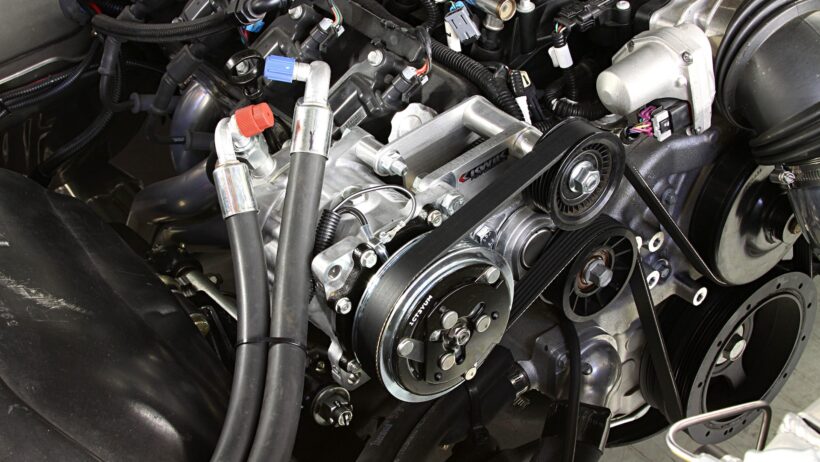In the world of automotive innovation, few characteristics enhance the driving experience quite like dual climate control systems. This feature, which allows passengers to customize their individual comfort zones, has become increasingly popular, particularly in trucks. The inquiry into when Chevrolet began integrating dual climate control into their trucks unveils a fascinating evolution in both technology and consumer expectations.
Understanding the timeline of dual climate control in Chevy trucks invites a deeper appreciation for the interplay between utility and luxury in automotive design.
The Early Days of Chevrolet Trucks
Chevrolet’s journey into the realm of trucks dates back to the early 20th century. The introduction of models like the 1918 Chevy 490 laid the foundation for what would eventually become a dominating presence in the truck market. However, initial models primarily focused on utility and performance, leaving little room for comfort features, which were seemingly reserved for luxury vehicles.
As the decades progressed, so did expectations. By the late 1950s and into the 1960s, consumer interests began to shift. Drivers were no longer satisfied with mere function; they craved comfort, convenience, and a touch of sophistication. Air conditioning systems, albeit primitive by today’s standards, began to appear in higher-end models, hinting at a burgeoning trend toward climate control in vehicles.
What marked this era was the realization that trucks could be more than just workhorses. They could embody personal expression and lifestyle choices. However, dual climate control—where both the driver and passenger could set their temperature preferences—was yet to materialize.
The Rise of Dual Climate Control
The pivotal moment for Chevrolet moved into a more luxurious domain during the late 1990s and early 2000s. With the advent of the Chevrolet Silverado, which debuted in 1999, the stage was set for enhanced amenities. This model pioneered various features designed to improve comfort levels in trucks, including more refined seating arrangements and modern stereo systems.
In the early 2000s, as consumer demands evolved, so did Chevrolet’s response. The Silverado increasingly catered to a segment of the market that prioritized comfort as much as functionality. It was during this time that dual climate control began to appear as an option in some Silverado trims, signaling a remarkable shift in design philosophy.
The introduction of dual climate control appealed not only to families but also to individuals who used their trucks for both work and leisure. The ability to adjust the temperature independently allowed for harmonious journeys, even amid fluctuating weather conditions. Passengers could enjoy a refreshing cool breeze while the driver preferred a touch of warmth, creating an unparalleled balance.
Enhancing Aesthetic Appeal: A Functional Luxury
Beyond its functional advantages, dual climate control also enhances the aesthetic appeal of Chevrolet trucks. The layout and sophistication of the dashboard controls reflect a commitment to both style and user experience. When entering a Chevrolet truck equipped with this feature, the impression is immediately one of modernity and thoughtfulness.
Modern configurations often feature sleek digital displays with intuitive touch controls that harmonize perfectly with the interior design elements. The incorporation of dual climate controls seamlessly integrates with the truck’s overall aesthetic, combining rugged functionality with an air of luxury. This melding of ruggedness and refinement appeals to a broad spectrum of consumers, from avid outdoor enthusiasts to those who use their trucks for daily commuting.
The Impact on Truck Culture
Chevrolet’s embrace of dual climate control is also indicative of broader trends within truck culture. As trucks increasingly transitioned to more family-oriented vehicles, the need for features that enhance comfort became paramount. Truck owners began viewing their vehicles not merely as utilitarian machines but as an extension of their lifestyle, reinforcing social status and personal preferences.
Today, Chevrolet’s commitment to include dual climate control across various models encapsulates an understanding of consumer needs. The feature has become commonplace in newer models of Silverado and Colorado, elevating the driving experience and solidifying Chevy’s reputation as a leader in torque and comfort.
The Verdict on Dual Climate Control in Chevy Trucks
The advent of dual climate control systems in Chevrolet trucks represents much more than just an advancement in technology. It signifies a paradigm shift in automotive culture—where trucks are reimagined as versatile vehicles that accommodate both work and leisure without sacrificing comfort. From their humble roots in the early 1900s to their modern iterations, Chevy trucks have evolved dramatically, mirroring consumer expectations and lifestyle changes.
As we steer into the future, one thing is clear: the integration of features like dual climate control has creatively bridged the gap between rugged utility and modern luxury. For seasoned truckers and newcomers alike, the allure of a Chevrolet truck equipped with dual climate control continues to shape modern expectations and driving experiences. Thus, the question of when Chevy started making dual climate control trucks not only marks a point in time but also illuminates the intricate dance between comfort, aesthetics, and diversity in truck design.








